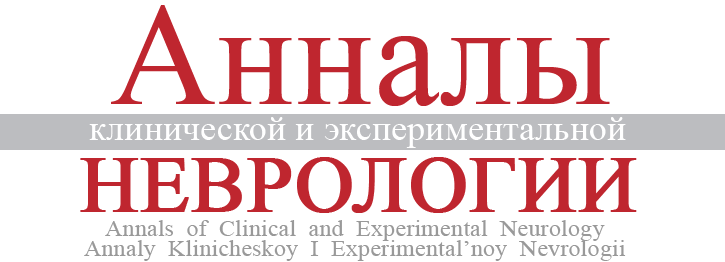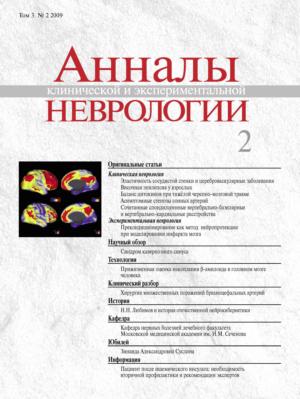Preconditioning of ischemic and hypoxic type was investigated as a method of protecting brain against acute ischemic injury. The preconditioning methods were applied to experimental rats 24 h before the time when local brain infarct was done by middle cerebral artery occlusion (MCAO). It was found that the ischemic and hypoxic preconditioning resulted in three general morphological changes: 1) the size of infarct zone was reduced by 2.2–3.8 times compared with rats that had not been treated with the preconditioning before MCAO; 2) the preconditioning treatment retained the number of living neurons in penumbra at the level of control rats, while without the preconditioning neuronal count in the penumbra after MCAO was 29% lower; 3) the number of glial cells in penumbra was increased after MCAO by 38% compared with the control level, and continued to increase under the preconditioning treatment up to 60%, that suggests an important role of neuroglia in neuroprotection. Selective blockers of ATP2dependant K+2channels (52hydroxydecanoate and glibenclamide) completely abolished the neuroprotective effects of the preconditioning.
Preconditioning as a method of neuroprotection in a model of brain infarct
- Authors: Khudoerkov R.M.1, Samojlenkova N.S.2, Gavrilova S.A.3, Pirogov Y.A.2, Koshelev V.B.2
-
Affiliations:
- Research Center of Neurology
- M.V. Lomonosov Moscow State University
- Lomonosov Moscow State University
- Issue: Vol 3, No 2 (2009)
- Pages: 26-30
- Section: Original articles
- Submitted: 07.02.2017
- Published: 14.02.2017
- URL: https://www.annaly-nevrologii.com/journal/pathID/article/view/374
- DOI: https://doi.org/10.17816/psaic374
- ID: 374
Cite item
Full Text
Abstract
About the authors
Rudolf M. Khudoerkov
Research Center of Neurology
Author for correspondence.
Email: rolfbrain@yandex.ru
Russian Federation, Moscow
N. S. Samojlenkova
M.V. Lomonosov Moscow State University
Email: rolfbrain@yandex.ru
Russian Federation, Moscow
Svetlana A. Gavrilova
Lomonosov Moscow State University
Email: rolfbrain@yandex.ru
Russian Federation, Moscow
Yu. A. Pirogov
M.V. Lomonosov Moscow State University
Email: rolfbrain@yandex.ru
Russian Federation, Moscow
V. B. Koshelev
M.V. Lomonosov Moscow State University
Email: rolfbrain@yandex.ru
Russian Federation, Moscow
References
- Верещагин Н.В., Моргунов В.А., Гулевская Т.С. Патология головного мозга при атеросклерозе и артериальной гипертонии. М.: Медицина, 1997.
- Власов Т.Д., Коржевский Д.Э., Полякова Е.А. Ишемическая адаптация головного мозга крысы как метод защиты эндотелия от ишемического/реперфузионного повреждения. Рос. физиол. журн. им..ИМ. Сеченова. 2004; 90: 40–48.
- Гусев Е.И., Скворцова В.И. Ишемия головного мозга. М.: Медицина, 2001.
- Данилов Р.К. Гистология. Эмбриология. Цитология. М.: Медицинское информационное агентство, 2006.
- Кошелев В.Б., Крушинский А.Л., Рясина Т.В. и др. Влияние кратковременной адаптации к гипоксии на развитие острых нарушений мозгового кровообращения у крыс, генетически предрасположенных к эпилепсии. Бюлл. эксп. биол. и мед. 1987; 103: 373–376.
- Суслина З.А., Варакин Ю.Я. Эпидемиологические аспекты изучения инсульта. Время подводить итоги. Анн. клин. эксперимент. неврол. 2007; 1: 22–28.
- Суслина З.А., Пирадов М.А., Танашян М.М. Принципы лечения острых ишемических нарушений мозгового кровообращения. В кн.: Суслина З.А. (ред.) Очерки ангионеврологии. М.: Атмосфера, 2005: 206–215.
- Back T. Pathophysiology of the ishemic penumbra – revision of a concept. Cellular and Molecular Neurobiology. 1998; 18: 621–638.
- Ballanyi K. Protective role of neuronal KATP channels in brain hypoxia. J. Exp. Biol. 2004; 207: 3201–3212.
- Barone F.C., White R.F., Spera P.A. et al. Ishemic preconditioning and brain tolerance. Temporal histological and functional out- comes, protein synthesis requirement, interleukin21 receptor antagonist and early gene expression. Stroke. 1998; 29: 1937–1951.
- Cadet J.L., Krasnova I.N. Cellular and molecular neurobiology of brain preconditioning. Mol. Neurobiol. 2009; 39: 50–61.
- Chen S.T., Hsu C.Y., Hogan E.L. et al. A model of focal ishemic stroke in the rat: reproducible extensive cortical infarction. Stroke.1986; 17: 738–743.
- Davis S.M., Donnan G.A. Using mismatch on MRI to select thrombolytic responders an attractive yepothesis awaiting confirmation. Stroke. 2005; 36: 1100–1101.
- Dirnagl U., Becker K., Meisel A. Preconditioning and tolerance against cerebral ishemia: from experimental strategies to clinical use. Lancet Neurol. 2009; 8: 398 –412.
- Hinkle J.L., McKenna Guanci M. Acute ischemic stroke review. Journal of neuroscience nursing. 2007; 39 (5): 285–310.
- Hossmann K.A. Pathophysiology and therapy of experimental stroke. Cellular and Molec. Neurobiol. 2006; 26: 1057–1083.
- Ito U., Kuroiwa T., Nagasao J. et al. Temporal profiles of axon terminals, synapses and spines in the ishemic penumbra of the cerebral cortex: ultrastructure of neuronal remodeling. Stroke. 2006; 37: 2134–2139.
- Mabuchi T., Kitagawa K., Ohtsuki T. et al. Contribution of microglia / macrophages to expansion of infarction and response of oligodendrocytes after focal cerebral ischemia in rats. Stroke. 2000; 31: 1735–1743.
- Manuchina E.B., Downey H.F., Mallet R.T. Role of nitric oxide in cardiovascular adaptation to intermittent hypoxia . Exp. Biol. Med. 2006; 231: 343–365.
- Miller B.A., Perez R.S., Shah A.R. et al. Cerebral protection by hypoxic preconditioning in the murine model of focal ischemia-reperfusion. Neuroreport. 2001; 12: 1663–1669.
- Nedergaard M., Vorstrup S., Astrup J. Cell density in border zone around old small human brain infarcts. Stroke. 1986; 17: 1129–1137.
- Obrenovitch T.P. Molecular physiology of precondicioning-induced brain tolerance to ishemia. Physiol. Rev. 2008; 88: 211–247.
- Racay P., Tatarcova Z., Drgova A. et al. Effect of ishemic preconditioning on mitochondrial dysfunction and mitochondrial P53 translocation after transient global cerebral ishemia in rats. Neurochem. Rec. 2007; 32: 1823–1832.
- Raval A.P., Dave K.R., DeFazio R.A. et al. PKC phosphorylates the mitochondrial K+ ATP channel during induction of ishemic preconditioning in the rat hippocampus. Brain Res. 2007; 1184: 345–353.
- Stenzel Poore M.P., Stevens S.L., King J.S., et al. Preconditioning reprograms the response to ishemic injury and primes the emer gence of unique endogenous neuroprotective phenotypes: a speculative synthesis. Stroke 2007; 38: 680–685.
- Verkhartsky A., Butt A. Glial neurobiology. John Wiley & Sons, 2007.
- Watanabe M., Katsura K., Ohsawa I. et al. Involvement of mitoK+ ATP channel in protective mechanisms of cerebral ischemic
- tolerance. Brain Res. 2008; 1238: 199 –207.
Supplementary files








